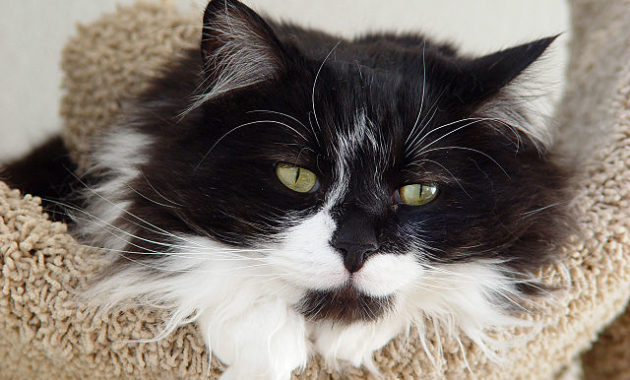The enigmatic behavior of cats assuming the 'loaf position' remains a captivating subject for feline enthusiasts. Delving into the underlying motives behind this endearing posture unveils a tapestry of instinctual inclinations and potential health implications.
As we unravel the four intriguing theories surrounding why cats exhibit this legs-tucked-under stance, we begin to uncover a deeper understanding of our beloved feline companions' behaviors.
Stay tuned to explore the multifaceted reasons behind cats' penchant for loafing, shedding light on their comfort-seeking tendencies, potential health cues, and the intriguing world of feline behavior.
Key Takeaways
- Cats loaf for warmth and comfort, minimizing exposed surface area.
- Loafing helps cats save energy for nighttime activities, aligning with their hunting instincts.
- Cats have a fundamental preference for coziness and seek warm, snug spaces.
- Changes in loafing habits can indicate health issues, making monitoring crucial for early detection.
Warmth and Comfort
Cats often assume the loaf position to ensure warmth and comfort by tucking their limbs close to their bodies. This posture helps cats conserve body heat by minimizing the surface area exposed to the surrounding environment. By curling up tightly in the loaf position, cats can trap their body heat and create a cozy microenvironment. This behavior is especially beneficial for cats with shorter coats or in colder environments.
Additionally, the close proximity of their limbs to their bodies provides a sense of security and comfort for cats. The loaf position allows them to feel protected and relaxed, contributing to their overall well-being. Ultimately, cats loaf to create a warm, snug, and comforting space for themselves.
Energy Conservation
In the realm of feline behavior, the act of assuming the loaf position serves a dual purpose beyond mere relaxation and comfort. Cats adopt this posture not only for cozy repose but also for energy conservation. This behavior allows cats to conserve their energy reserves, preparing them for their active nighttime pursuits. Through loafing, cats can rest and recharge during the day, ensuring they are ready for their natural nocturnal instincts to roam and hunt. This conservation strategy aligns with their evolutionary background as predators, optimizing their readiness for the darkness and activities that come with it.
- Helps cats save energy for nighttime activities
- Allows for rest and recharge during the day
- Aligns with cats' natural nocturnal hunting instincts
Coziness Preference

A cat's inclination towards seeking comfort and coziness is a fundamental aspect of their behavior that influences various aspects of their daily routines and postures. Cats are known for their love of warmth and soft surfaces, making them natural connoisseurs of coziness.
The act of loafing, with legs tucked underneath, provides a sense of security and warmth for cats, mimicking the feeling of being snuggled up. This preference for coziness is evident in their choice of resting spots, often seeking out soft blankets, pillows, or sunny spots to curl up in.
Understanding and catering to a cat's desire for comfort can help strengthen the bond between feline companions and their human caregivers, ensuring a content and relaxed pet.
Health and Pain Signals
The behavior of cats, especially their loafing posture with tucked legs, can serve as a subtle yet crucial indicator of their health and potential pain signals. Cats may exhibit changes in their loafing habits that could signal underlying health issues or discomfort. Some signs to watch for include:
- Constantly trying to curl up tightly: This behavior may indicate that the cat is trying to alleviate pain or discomfort.
- Inability to tuck paws under their body: If a cat is unable to assume the loaf position comfortably, it could be a sign of physical pain or stiffness.
- Additional signs of distress: Look out for lowered head, tightly shut eyes, trembling, or changes in eating habits, as these could also point towards potential health issues requiring veterinary attention.
Loafing Habits and Behaviors

Among the various distinctive postures that cats assume, the cat loaf position stands out as a common and intriguing behavior that reflects their unique comfort-seeking tendencies. Cats loaf by curling their front feet under their chest and tucking in their back feet, resembling a loaf of bread.
This position serves multiple purposes for felines. It helps them stay warm by conserving body heat, especially beneficial for those with shorter coats. Additionally, loafing allows cats to conserve energy, as they spend a significant portion of their time resting to prepare for their active nighttime hours.
Beyond practical reasons, loafing is a behavior that simply feels comfortable to cats, adding to their repertoire of cozy positions. Monitoring changes in a cat's loafing habits can also serve as a potential indicator of underlying health issues, requiring veterinary attention if significant deviations occur.
Conclusion
In summary, the intricate nature of cats assuming the loaf position encompasses a blend of instinctual behaviors, comfort-seeking tendencies, and potential health indicators.
Through exploring the theories surrounding this adorable legs-tucked-under posture, we gain valuable insights into our feline companions' well-being and preferences.
The act of loafing serves as a fascinating window into the world of feline behavior, offering a deeper understanding of their innate habits and needs.




